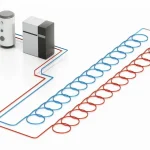Solar-Powered Home Appliances: A Smart Investment for Sustainability and Savings
In an age where energy consumption is soaring, homeowners and sustainability enthusiasts alike are turning their attention to solar-powered home appliances.
Not only do these devices help reduce electricity bills, but they also contribute to a greener planet by minimizing the carbon footprint.
In this comprehensive guide, we will explore the world of solar-powered appliances, focusing on their economic and environmental benefits, types of appliances available, and tips for integrating them into your home.
What Are Solar-Powered Home Appliances?
Solar-powered home appliances are devices that harness energy from the sun to operate, either through solar panels installed on your property or built-in solar cells.
These appliances work just like traditional devices but are powered by a clean, renewable energy source.
How Do They Work?
Solar appliances use photovoltaic (PV) cells to convert sunlight into electricity. This electricity is stored in batteries or used directly to power the devices. Here’s a simplified overview of the process:
- Solar Panels: Collect sunlight and convert it into DC (direct current) electricity.
- Inverter: Converts DC electricity into AC (alternating current), which most home appliances use.
- Appliances: The converted energy powers your home devices.
By using solar-powered devices, homeowners can significantly reduce their reliance on traditional electricity sources, leading to lower energy costs and a smaller environmental impact.
Why Should You Invest in Solar-Powered Appliances?
There are numerous benefits to investing in solar-powered home appliances. Below are some of the top reasons:
1. Cost Savings
One of the most significant advantages of solar appliances is their ability to drastically reduce energy costs. With energy prices rising across the U.S., the potential to cut down on electricity bills is highly appealing.
While the initial investment in solar-powered appliances may be higher, the long-term savings on monthly bills make it a smart financial move. Here’s how it works:
| Conventional Appliances | Solar-Powered Appliances |
|---|---|
| Consumes electricity from the grid | Powered by free solar energy |
| Monthly electricity bills | No monthly cost after installation |
| Ongoing energy costs | Low maintenance costs |
2. Environmental Impact
Switching to solar appliances reduces your carbon footprint, making a positive impact on the environment. Solar energy is a renewable source, meaning it doesn’t deplete natural resources or produce harmful emissions like fossil fuels. For environmentally conscious consumers, this is a key factor in making the transition.
3. Energy Independence
Solar appliances give homeowners greater control over their energy consumption. By generating your own power, you reduce reliance on external power grids, protecting yourself from energy price hikes and potential outages.
4. Increase in Property Value
Homes with solar panels or solar-powered systems tend to have higher resale values. As more buyers look for energy-efficient homes, installing solar appliances can be a strong selling point.
Types of Solar-Powered Appliances Available
Solar-powered home appliances come in various forms, catering to different needs around the house. Below is a list of common solar appliances and how they work:
1. Solar Water Heaters
These systems use solar panels to heat water, which can be used for showers, dishwashers, and other household needs. They are especially efficient in sunny climates and can drastically reduce water heating costs.
2. Solar-Powered Refrigerators
Ideal for off-grid living or reducing electricity use, solar refrigerators use solar panels to operate without grid power. They are a perfect option for environmentally conscious households looking to minimize their reliance on traditional electricity.
3. Solar-Powered Air Conditioners
During the summer months, air conditioning can account for a significant portion of a household’s energy bill. Solar-powered air conditioners help mitigate these costs by using solar energy to cool your home efficiently.
4. Solar Lights
Solar-powered lighting systems are widely available and affordable. Whether for outdoor security or interior design, these lights can function efficiently with minimal maintenance and zero energy costs.
5. Solar Ovens
A solar oven uses the sun’s energy to cook food without the need for electricity or gas. It’s a great option for outdoor cooking or camping, allowing users to harness the power of the sun for everyday meals.
How to Integrate Solar-Powered Appliances into Your Home
Making the switch to solar-powered appliances can seem daunting, but with the right approach, it can be a smooth transition. Here are a few tips to get started:
1. Start Small
You don’t have to replace all your appliances at once. Start with smaller devices, like solar lights or a solar oven, to get a feel for how they work in your home.
2. Assess Your Energy Needs
Determine which appliances in your home consume the most energy and consider replacing them with solar-powered alternatives. For example, if your air conditioner or refrigerator is responsible for a large portion of your energy use, switching to solar versions could offer immediate savings.
3. Install Solar Panels
If you’re planning to power multiple appliances with solar energy, consider installing solar panels on your roof. This can be a larger upfront investment but will provide a renewable energy source for years to come.
4. Use Solar Battery Storage
For appliances that need to run during the night or on cloudy days, installing solar battery storage ensures you have a consistent energy supply.
Is the Investment Worth It?
Switching to solar-powered home appliances requires an initial investment, but the long-term benefits far outweigh the costs. The savings on electricity bills, combined with the environmental advantages, make it a worthwhile consideration for any homeowner. Below is a comparison of the typical payback period for solar appliances:
| Appliance | Upfront Cost | Estimated Payback Period |
|---|---|---|
| Solar Water Heater | $2,000 – $5,000 | 5-10 years |
| Solar Refrigerator | $800 – $2,500 | 4-8 years |
| Solar Air Conditioner | $1,500 – $3,500 | 6-9 years |
| Solar Lighting | $20 – $100 | Immediate to 1 year |
As demonstrated, the long-term savings in energy costs and the environmental benefits provide an excellent return on investment.
Conclusion
Solar-powered home appliances are a forward-thinking solution for homeowners looking to reduce energy costs while embracing sustainability.
With a variety of appliances available, from solar water heaters to solar ovens, there are countless ways to integrate this technology into your home.
While the initial cost may seem high, the long-term savings and environmental benefits make it a smart investment for the future.
As energy prices rise and the world shifts towards greener solutions, now is the perfect time to explore solar-powered home appliances.
Not only will you save money, but you’ll also be making a positive impact on the planet, one solar-powered device at a time.





